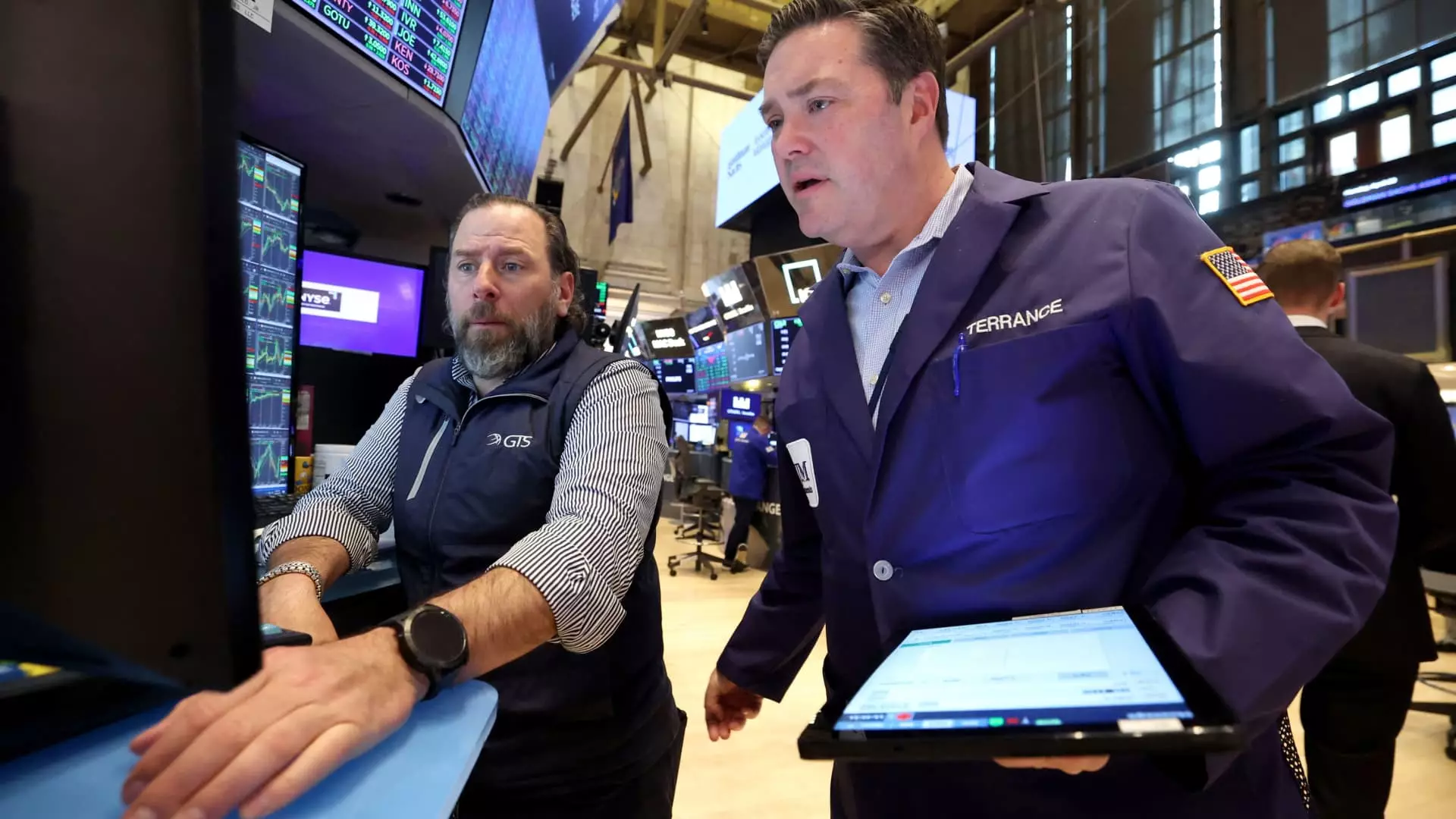In a world where uncertainty reigns supreme, the financial markets often mirror the trepidation of their participants. The recent rebound of the S&P 500 and Nasdaq Composite, following the tariff announcement on April 2, has painted a picture of resilience that belies the underlying anxieties pervading Wall Street. As investors strategically position themselves ahead of the Federal Reserve’s upcoming decision, the narrative is shifting from optimistic recovery to cautious hedging. The anticipation around Chair Jerome Powell’s commentary carries an ominous weight, suggesting that even a lackluster announcement could catalyze corrections in stock prices.
What’s particularly alarming is the frail psychological state of many investors. Craig Johnson, chief market technician at Piper Sandler, highlights a potential inflection point: the S&P 500’s current trading range flirting with resistance levels might serve as the prelude to a significant pullback. This mentality reflects a broader trend where stakeholders seem more ready to recoil than to capitalize on opportunity, indicating a collective mindset fixated on fear and potential downturns.
Fed Policy: A Double-Edged Sword
The relationship between investor sentiment and the Federal Reserve’s policies is intricate and fraught with uncertainty. Observations from market strategists, such as Steve Sosnick of Interactive Brokers, demonstrate a palpable hesitation to move forward ahead of the Fed’s decision, mainly due to the pressing tariff timeline. This raises an essential question: Is the Fed inclined to adopt a cautious stance due to geopolitical instability, or are they prepared to risk market volatility? The ambiguity surrounding inflation data and economic growth further complicates matters.
This inherent uncertainty marks a critical juncture. The prevailing view suggests that the Fed is wedged between a rock and a hard place—forced to maintain a delicate balance to navigate through the dual threats of inflation and economic deceleration. Without clear data to justify aggressive moves, it’s conceivable that investors might react negatively, perpetuating a cycle of anxiety and hesitation that stalls economic momentum.
Choosing Safe Harbor Amid Market Chaos
As the waters of economic unpredictability churn, investors are gravitating towards more stable sectors, reflecting a palpable shift in strategy. Keith Lerner’s insights reveal an inclination towards utilities, financials, and communication services, which stand out as the preferred bastions of relative safety. The ongoing commitment to AI technologies serves as an undercurrent; the expectation that mega tech companies will weather economic storms seems to bolster these stocks’ defensive attributes.
Yet, this strategy might be more about survival than growth. While these sectors demonstrate promise, it raises concerns about whether investors are genuinely capitalizing on future growth opportunities or simply retreating to perceived safety. The evident reliance on utilities as a defensive play suggests an avoidance of more volatile assets, revealing a defensive posture yet to embrace recovery wholeheartedly.
The AI Play: A Flicker of Hope?
Adopting a more targeted approach, Adam Patti, CEO of VistaShares, emphasizes the strategic potential of tech and AI-focused stocks. The prevailing belief is that these industries are more than resilient; they’re poised for resurgence. But is this optimism warranted? The suggestion that AI stocks will recover “with a vengeance” could be overstated, underlining a fundamental overconfidence in an at times overheated sector.
Investors must differentiate between genuine opportunities and the specter of speculative excess. The technologies driving AI advancements are impressive but are they reflected in the valuations of prominent players? This begs further scrutiny—an assessment beyond surface-level excitement to ensure that investments are firmly grounded in robust fundamentals rather than the misadventures of market hype.
Amidst Uncertainty, a Conservative Approach to Bonds
In contrasting strategies, Malcolm Ethridge’s inclination toward short-term bonds signifies a departure from riskier equities amid uncertainty. Such moves indicate a growing belief that securing fixed rates could be paramount for the foreseeable future. In an era where the 2-year Treasury note yields hover precariously close to 3.8%, investing in bonds may resonate with those wary of equity market pitfalls. The opportunity to lock in advantageous rates feels increasingly appealing, suggesting that investors are seeking safety amidst chaos.
Indeed, the current climate compels a pivot towards more conservative financial maneuvers. As stock market valuations remain under scrutiny, the allure of bonds as a strategy for capital preservation highlights a shift in investor psychology—one that is becoming increasingly cautious as external pressures mount.

